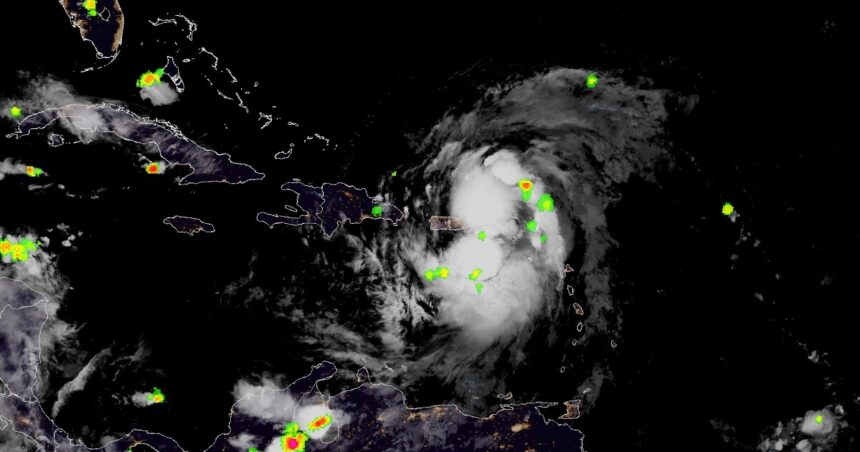Tropical Storm Ernesto intensified in the Atlantic on Tuesday, ahead of an expected slowdown and turn toward the north.
On Tuesday evening the storm was about 90 miles east of Puerto Rico, moving west-northwest at about 18mph. It had maximum winds of 65mph and was forecast to strengthen into a hurricane late on Tuesday or early on Wednesday.
The center of the storm is forecast to pass just northeast and north of Puerto Rico over Tuesday and Wednesday. From there it will proceed over relatively open water and approach Bermuda closer to Friday.
Tuesday evening the National Hurricane Center announced a hurricane watch for the U.S. Virgin Islands, the British Virgin Islands, Vieques and Culebra.
A tropical storm warning was in effect for the U.S. Virgin Islands, the British Virgin Islands, Puerto Rico, Vieques and Culebra.
Four to six inches of rain were forecast for the U.S. and British Virgin Islands and for parts of the Leeward Islands. Southeastern Puerto Rico could see as much as 10 inches of rain, while northwestern parts of the island could get two to four inches.
Storm surge could raise water levels as much as three feet above ground level in eastern Puerto Rico from San Juan to Guayama. The same warning applied to Culebra and Vieques and in the U.S. Virgin Islands and British Virgin Islands.
RELATED STORY | NOAA expects ‘extraordinary’ 2024 Atlantic hurricane season
As the storm approached, Puerto Rico activated the National Guard and canceled classes at the start of the public school year, according to The Associated Press. Bermuda could also get hit with the storm later in the week.
RELATED STORY | Viewer Spotlight: Explaining the relationship between climate change and extreme weather
While it is too soon to tell how the storm will impact Bermuda, the National Hurricane Center predicts that Ernesto will become a Category 2 hurricane with 110 mph winds by the time it reaches the island.
The storm will likely steer clear of the U.S. mainland.
Ernesto comes during what forecasters predict will be a busy hurricane season. Generally, hurricane activity quickly ramps up in August in the Atlantic, and peaks around Sept. 10.





